Preston Stronach, Dalhousie University School of Architecture
This thesis project proposes a type of township development that integrates industry with water-based communities toward the promotion of healthy environments and nature-based infrastructural systems. The design site is centered on a kilometer long section of a sediment-filled shallow river in the community of Fall River, Nova Scotia.
Surrounded by dense woodlands, and nestled between two freshwater lakes, the site is explored through the lenses of industry, inhabitation, and environment. Each is considered in the context of the broader Shubenacadie water system: a waterway that is under immense stress from its various functions, through serving urban centers and agriculture to hosting the world’s highest tides.
To integrate human habitation in an ecologically sensitive manner, new canal locks are proposed to manage water levels and control sediment. Sediment buildup is a major problem in the maintenance of canals and is primarily mitigated through periodic dredging operations. During a three-day, 100-kilometre canoe expedition on the waterway, hand-dredged sediment was collected from the locations of the proposed locks. The sediment was then later catalogued, dried, and recompressed to explore its potential use in the creation of construction components.
Building from this hands-on research, the design proposes a series of rammed earth structures, including a three-story town center, a lock-keeper’s house and studio, and an outdoor classroom. Within and around each building, water is recycled and runoff controlled through the use of greywater systems, permeable paving, strategically placed bioswales, and subgrade sand filters.
Through the harmonization of material use, environmental impact, and human habitation, the project proposes an architecture that integrates environmental management with our everyday lives.




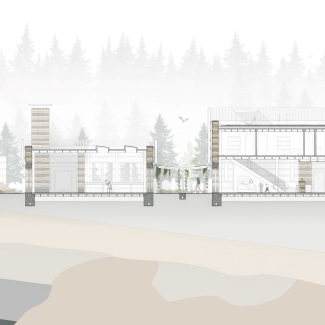
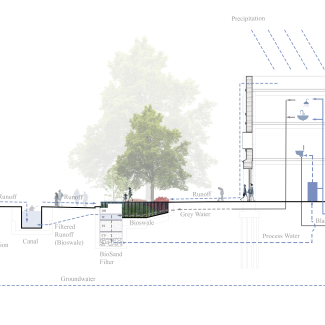
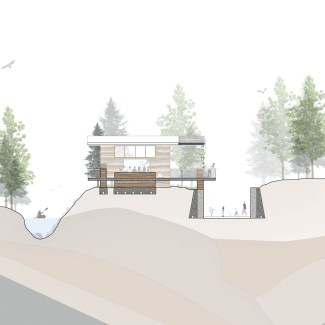

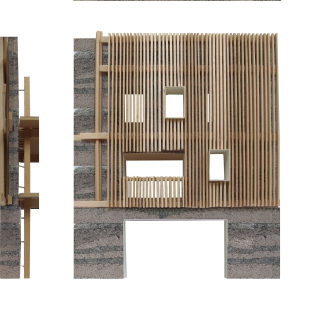
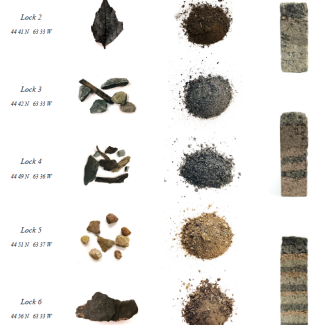
A thoughtful and historic consideration of an important societal issue - how to protect waterways and promote a circular economy. The project considers how to use the waterway ecosystem infrastructure to benefit the environment while educating visitors about these benefits. The study covers the impact of a large ecosystem, and how it is manipulated and displayed at the point where the public can interact with the system to learn, explore and recreate. It demonstrates an ability to visualize topography on a large scale while remaining sensitive to historical and geographical context.
National Urban Design Awards Jury 2024